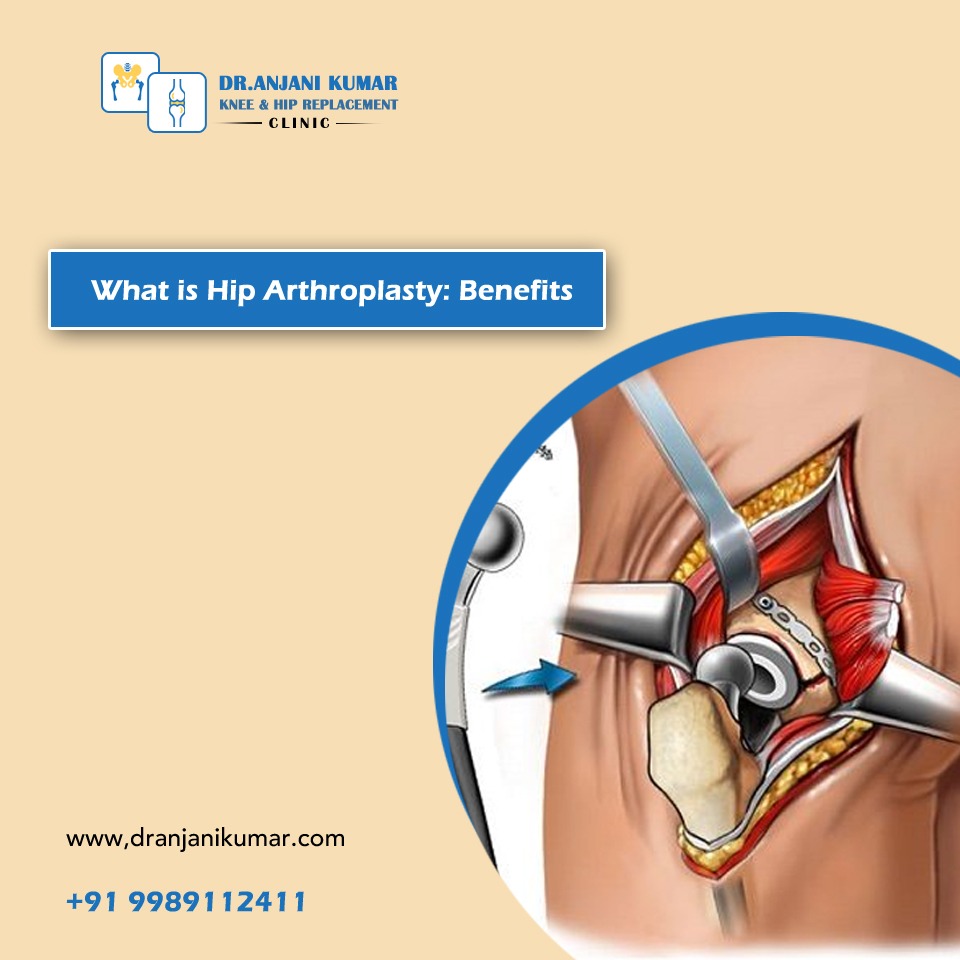Hip replacement, often called hip arthroplasty, is an advanced surgical technique to treat hip pain. During surgery, artificial implants are replaced in the place of damaged parts of the hip joint. The hip joint consists of a ball and a socket, the important parts for the movement. During hip replacement surgery, one or both hip parts might be replaced. You will be able to exercise and resume daily activities more easily following the procedure.
Types of hip replacements
Hip replacements are majorly calculated into two different types:
Partial hip replacement: Only the damaged femoral head is replaced in a partial replacement. Usually, this is performed on a patient with a certain type of hip fracture in elderly people
Total hip replacement (THR): THR is completely different here. The acetabulum and femoral head are replaced with prosthetic implants made from metals, ceramics, or plastic materials and performed in all age groups of adult people.

Benefits of hip replacement surgery
Your hip joint looks like a ball inserted into a socket connecting the upper thigh bone of the leg to your pelvis. The thigh bone is called the femur with a ball-shaped “head” at the top end and perfectly fits into the pelvic socket, also called the acetabulum.
Hips are the most flexible and free-moving joints next to the shoulders in your body, which means they can move backwards and forward, side to side, and perform twisting movements.
There are many advantages of having a hip replacement, and here are the benefits of it;
High success rate
Overall, hip replacement is considered among the most successful medical surgical procedures. It is efficient, safe, and long-lasting.
Provides relief from pain
The surgery’s most significant advantage and the main purpose is relief from hip pain. A hip replacement offers excellent pain relief in almost all patients experiencing arthritic hip problems.
Improves your mobility and the functions of the hip
The next major benefit after pain reduction is increased mobility. You will be able to walk freely again after a hip replacement. The enhanced hip functions also help greatly with other common hip arthritic concerns, like going upstairs, sitting and getting up from a chair, walking for long distances etc.
Long-term solution
A hip replacement surgery is a long-term solution for many serious hip problems. According to existing data, 80-85% of hip replacement prosthetics work exceptionally well even after twenty years of being implanted.
Who can benefit from a hip replacement?

The surgeon may recommend hip replacement surgery if you experience significant pain, inflammation and damage to your hip. The following are the conditions that can cause these joint problems such as:
- Osteoarthritis (OA)
- Rheumatoid arthritis (RA)
- Osteonecrosis, also called avascular necrosis
- Injury or trauma like hip fracture
- Hip joint tumours
In some cases, the surgical approach recommended by your doctor can also influence the benefits. They may include the type of surgery, gaining access to the hip by the surgeon, the type of the implant, and style of implant and the way it is attached. The patient’s age, the activity level or work he will be involved in, and the health of the hip bones can also influence the benefits. Revision surgery can be more difficult or easier depending on the surgical approach and type of implant attachment used.
While evaluating whether minimally invasive surgery or traditional hip replacement is the best option for you, your orthopaedic surgeon will explain how he plans to perform the surgery and what type of implant to use. For more detailed information, consult Dr Anjani Kumar, Senior Consultant Orthopaedic Surgeon in Hyderabad. Call +91 9989112411 and book your appointment today.




